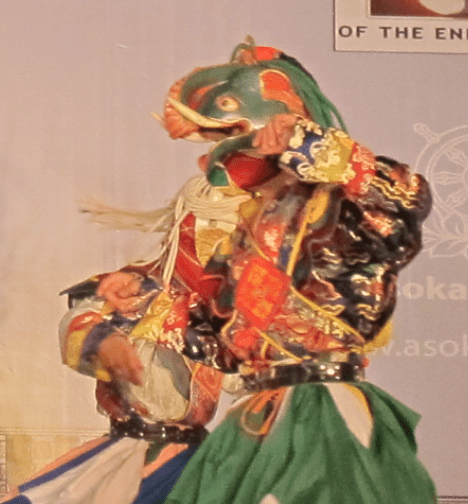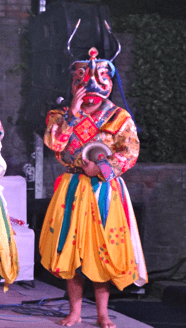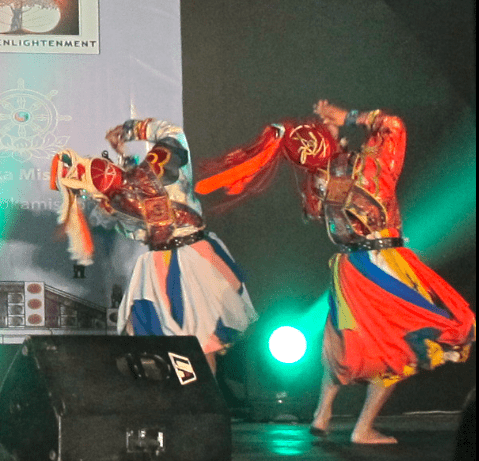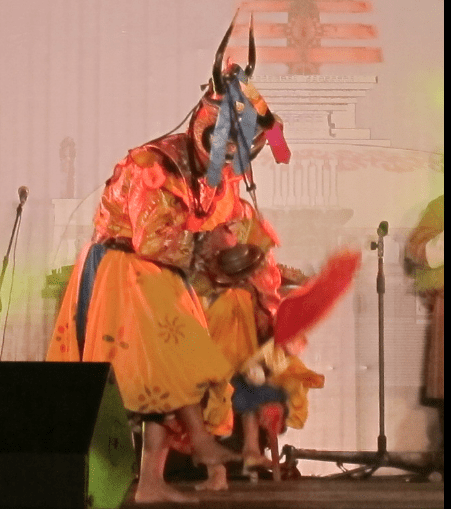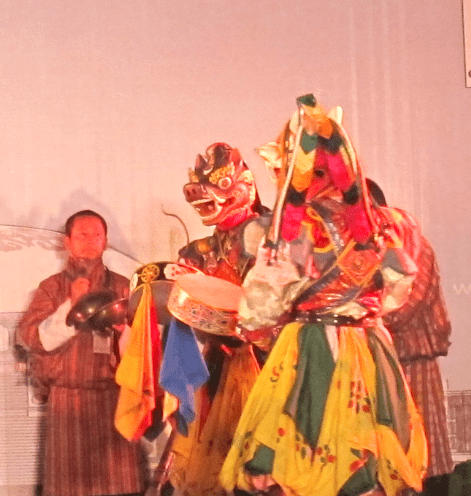Music from Bhutan is ambient while creatively carving out an ethereal dimension for dance and song. Such an arresting kind of music is only natural coming from one of the most dazzling artistic entourages at the GBC. The special performance group was from the Royal Academy of Performing Arts (RAPA), straight from the Kingdom of Bhutan. The RAPA is a government body within the Ministry of Home and Cultural Affairs that preserves and promotes traditional Bhutanese culture through music, dance and song. Their most notably visual members are their masked dancers in elaborate costume. The RAPA was founded in 1954 with the blessing of the Third Dragon King (Druk Gyalpo), Jigme Dorji Wangchuck, and in 1967, it was institutionalized as an academy and the Royal Dance troupe was created.
The Academy is located in the Bhutanese capital of Thimpu, and a few of its troupe made a special trip down into India to showcase their marvelous cultural heritage, which is a harmonious blend of Vajray?na Buddhism and native Himalayan spirit and mountain worship. Just as Celtic Christianity brings together the Jewish carpenter from Galilee and the magical groves of enchanted woodlands and springs, Bhutanese music and song unites the barefoot Indian sage with the rimy, chilly but warm-hearted snowscapes of the Bhutanese forests and mountains.
The troupe performed at two evening events, the second of which was the very large fraternal A?oka dinner gathering including all of the GBC attendees (all Buddhist denominations) at the Ashoka Mission compound. The Bhutanese performers included beautiful ladies and dashing gentlemen of the troupe who gave outstanding performances of a traditional song, “Potala”, and an instrumental accompaniment. But in my estimation, the most notable feature they showcased was the eerie, mesmerizing, and evocative dance of the benevolent spirits that conquer evil forces. Four mystic animals were represented: the dragon figure took the lead and they frolicked, and stomped, and trampled on everything inauspicious, including demonic spirits.
The dragon was accompanied by a noble eagle, a lion, and a bull, who brought the audience into a shamanic universe of shrill Bhutanese wind and string instruments while the animals spun, and twisted, and stamped away all the darkness. The only percussion instruments were the drums that the dancers clutched. Their occasional but calculated beats echoed into the night air around us; mesmerizing in its pull; seductively drawing the listeners into thoughts that the swirling & dancing performance was not merely entertainment in that moment, but a mystique that arose to hint of a very real need to exorcise, and overcome dark impulses that become destructive spirits. Native Himalayan religion speaks of fiendish ghouls and terrifying demons that must be excised or placated. The Buddhist faith internalizes the malevolent forces of the world, insisting that the true war is within and that humanity cannot flee its own shadow. In the Bhutanese spirit dance, forever in debt to its native spirituality but irrevocably influenced by Buddhism, we see these mystical elements converge into a boisterous, festive rancor that dispels all ills and reveals the benevolent Divine to the world.
Despite the inherently life-loving and world-affirming message of the dance, I couldn’t help feeling haunted by the masks. It is known that as early as the 1800’s traveling European traders and missionaries, as well as Chinese diplomats and ambassadors, were rather preoccupied by the ghostly otherworldliness of the masks and costumes of Himalayan trance dancers. One point that stood out for me, was that after I saw the dancers perform for the second time in the week, I knew that there was something in the sheer mesmeric power of the Bhutanese musicians that could not be simply marked off as “talent” or “practice.” No, there was a liturgical power, a spiritual weight in their music – the spirits of the snow mountains, after all, are now the protectors of the Buddhist Diamond Vehicle.


